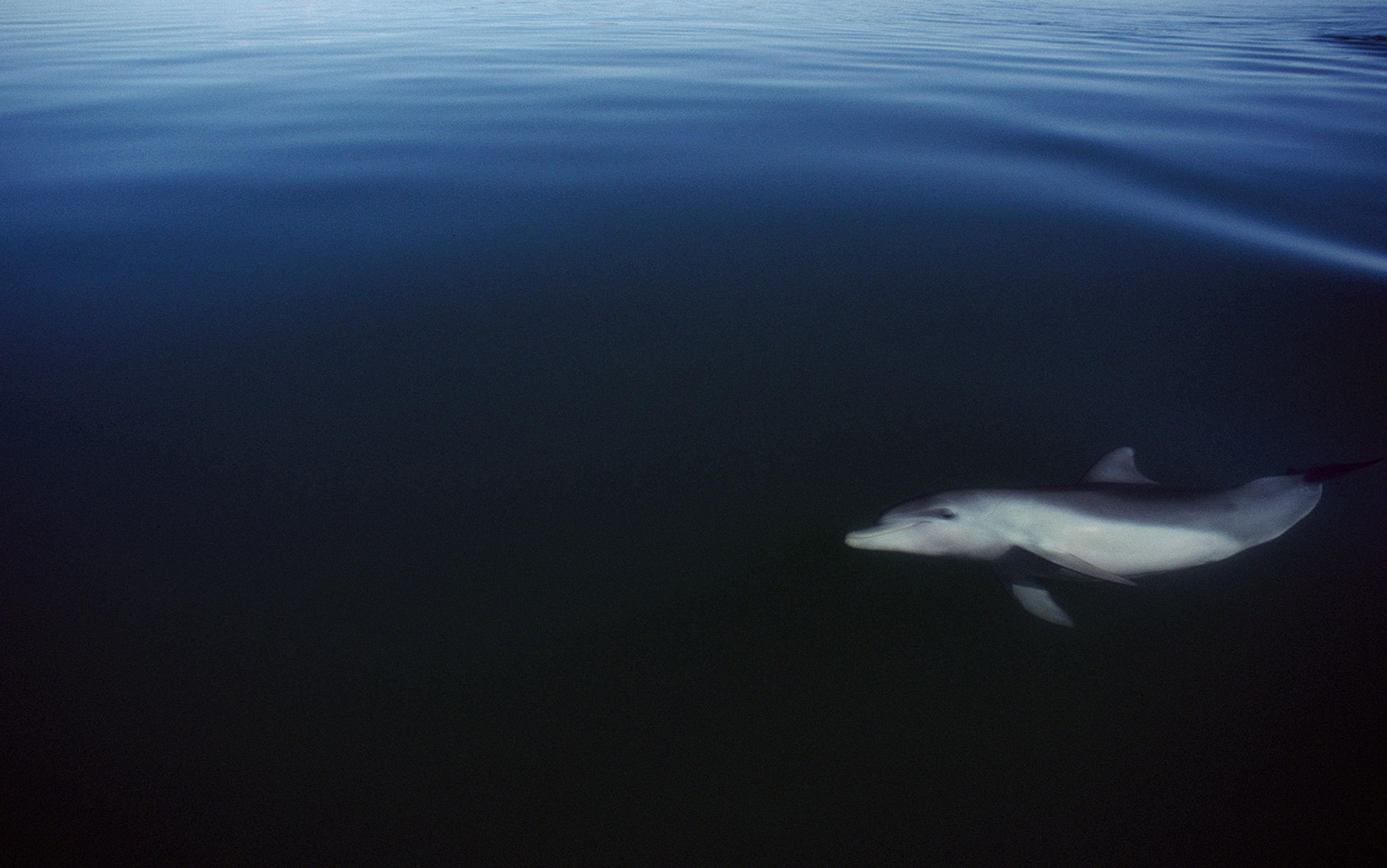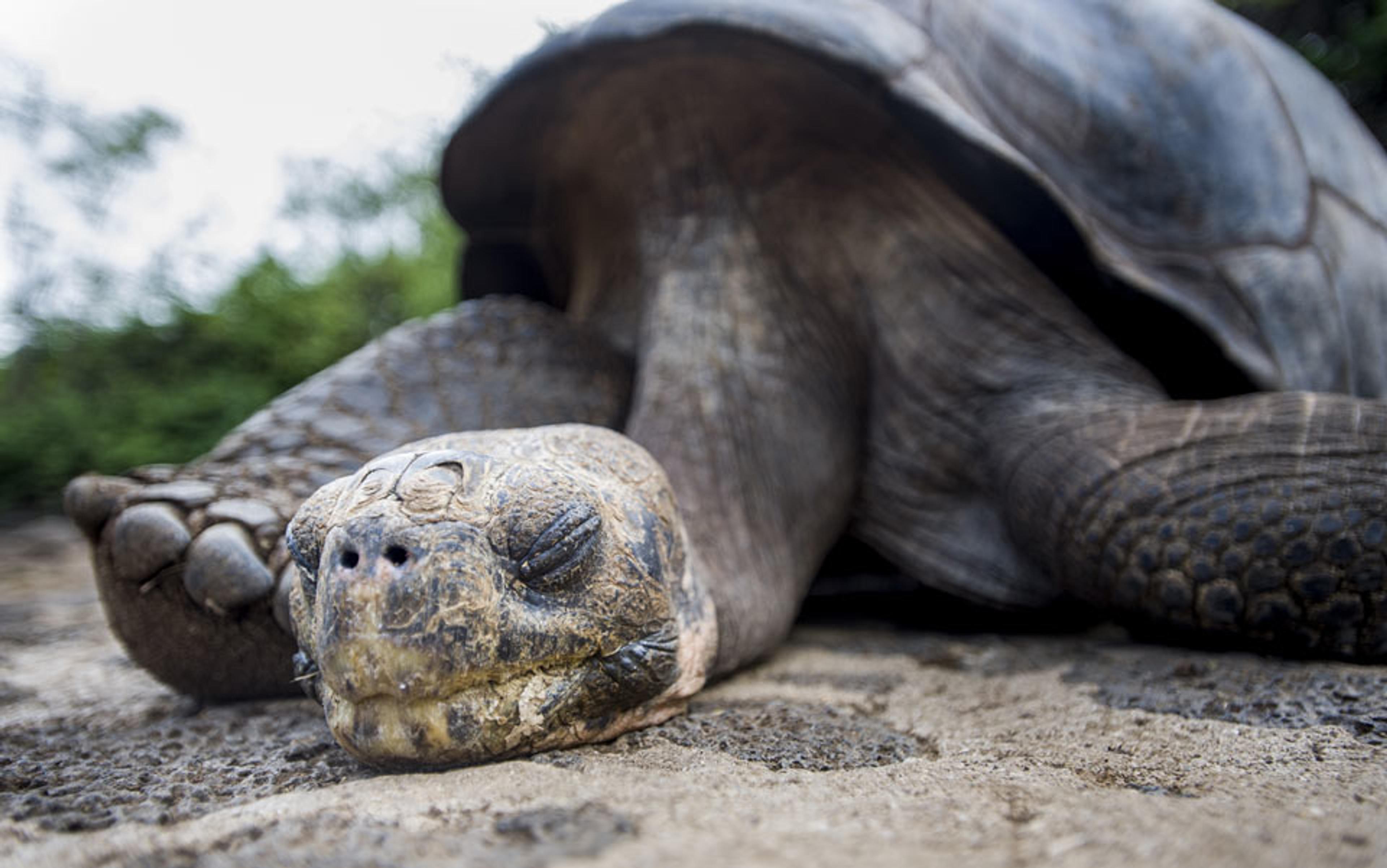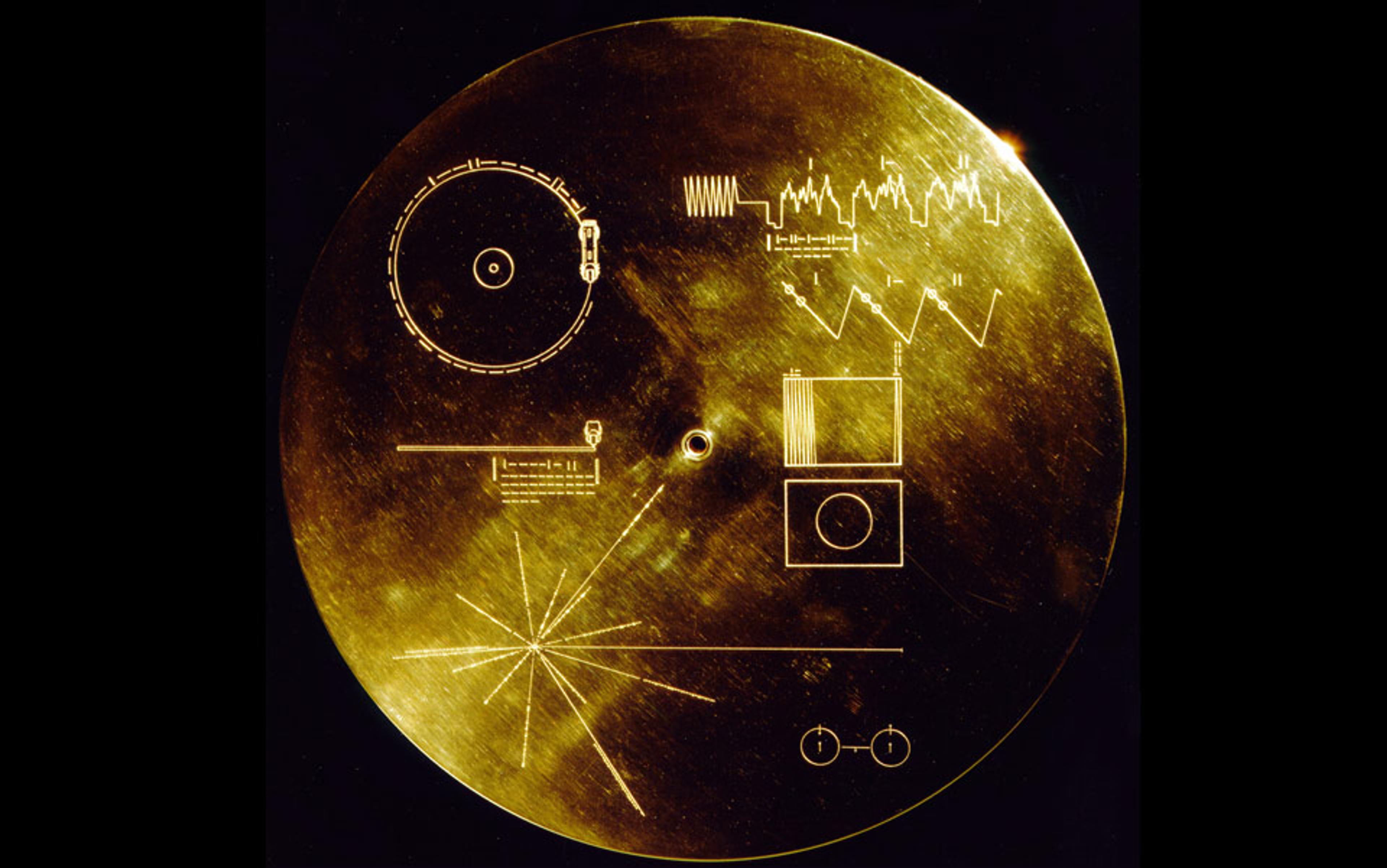Despite putting questions to nature, as the philosopher Francis Bacon once suggested, science has revealed to us a strangely silent world. Where once divinity’s lessons were read out from the structure of the cosmos itself, now outer space answers our outward-bound signals with only stony stillness. There is no response to our call. Where once the bestiary and fable allowed each and every animal to sing to us its instructive lesson, we now recognise that we have never yet held a philosophical dialogue with another species. The animals don’t speak to us. Where once we felt convinced that we were in harmonious conversation with nature writ large, where there might be miscommunications but the back-and-forth would go on interminably, now there is one particular silence we fear the most: that of our own potential extinction.
These three modern silences – of outer space, of other beings, and of our own end – can weigh upon us heavily. But there are important and hopeful lessons here, to be found in the story of our attempts, failed or not, to communicate with this Universe we find ourselves within.
The year is 1961. As Cold War tensions crescendo, an American neuroscientist named John C Lilly makes a bold claim. He announces that he has made contact with the first ‘alien’ intelligence. But Lilly wasn’t talking about little green men from Tau Ceti, he was talking of minds much closer to home: bottlenose dolphins.
Lilly had spent the previous decade hammering electrodes through animals’ craniums, attempting to map the reward systems of the brain. Having started probing the grey matter of macaques, he was shocked when he acquired some dolphins to test upon. Swiftly, he became convinced of their smarts. Upon hearing dolphins seemingly mimic human vocalisations – in their ‘high-pitched, Donald Duck, quacking-like way’ – he became certain that they also spoke to each other in ‘dolphinese’.

John C Lilly pictured in Malibu in 1976. Photo by John Bryson/Life Collection/Getty
Lilly was the first to really demonstrate how socially intelligent these beings are. Of course, others had long made similar claims. Ancient Greek authors celebrated the nobility and philanthropy of the cetacean, recounting tales of human-dolphin companionship. But, in the modern era, the aquatic mammal fell into disrepute. One 19th-century captain referred to them as ‘warlike and voracious’. In 1836, the French zoologist Frédéric Cuvier remarked on this fall from benevolent angel to carnivorous brute, deeming the wild dolphin a ‘stupid glutton’. But, given their prodigious brains, he was certain of the potential for intelligence. They have no natural competition, thus they have no need to cultivate their intellect. Venturing that humans raised in the same state would also be feral, Cuvier suggested that we civilise dolphins – thereby unleashing their potential for rationality.
More than a century later, in the 1960s, Lilly was making similar claims about the perfectibility of dolphins. But he was convinced that he would soon have undeniable evidence: cross-species communication. Excited, he made rhapsodic predictions. He foresaw dolphins being deployed as deep-sea rescue teams or ocean-floor cartographers. Perhaps they could wage ‘psychological warfare’ on enemy submarines. Lilly even spoke about the potential for interspecies ‘psychoanalysis’.
We didn’t civilise the dolphin, nor did we tune in to a civilised galaxy
‘So far the dolphins have a good reputation with the general public,’ he mused. But should they quickly ‘achieve a bilateral conversational level’, we ‘are in for trouble’, because they will become capable of acquiring humanity’s accumulated knowledge, and there will be an ‘explosive development’ of dolphin intelligence.
Adding more urgency, he suggested pushing his ‘research programme to its ultimate extreme speed’, so that we have some grasp of interspecies communication before the real challenge comes: contact with extraterrestrials. We need to be certain that our interspecies diplomacy is up to scratch before contacting genuine aliens. Talking with dolphins provides a dry run. Given the potential consequences of miscommunication with another civilisation, neglecting this ‘might be more devastating … than was neglect of the political implications of the atomic bomb’.
Lilly wasn’t alone in believing that contact with aliens could come very soon. Other scientists held the same view at the time. The early 1960s saw the scientific search for extraterrestrial intelligences beginning in earnest, spearheaded by the American astronomer Frank Drake and a young Carl Sagan. Indeed, Lilly found himself invited to give a talk at a conference in Green Bank, West Virginia, on the site of Project Ozma: the first coordinated attempt to use radio telescopes to detect messages from other civilisations throughout the Milky Way. Lilly spoke for three hours about his own work communicating with another species. Inspired, and seeing in this a clear analogue for their own work attempting to contact extraterrestrials, the group of scientists at the conference adopted the moniker ‘the Order of the Dolphin’. Hopes were high that their searches would soon reveal a noisy galaxy.
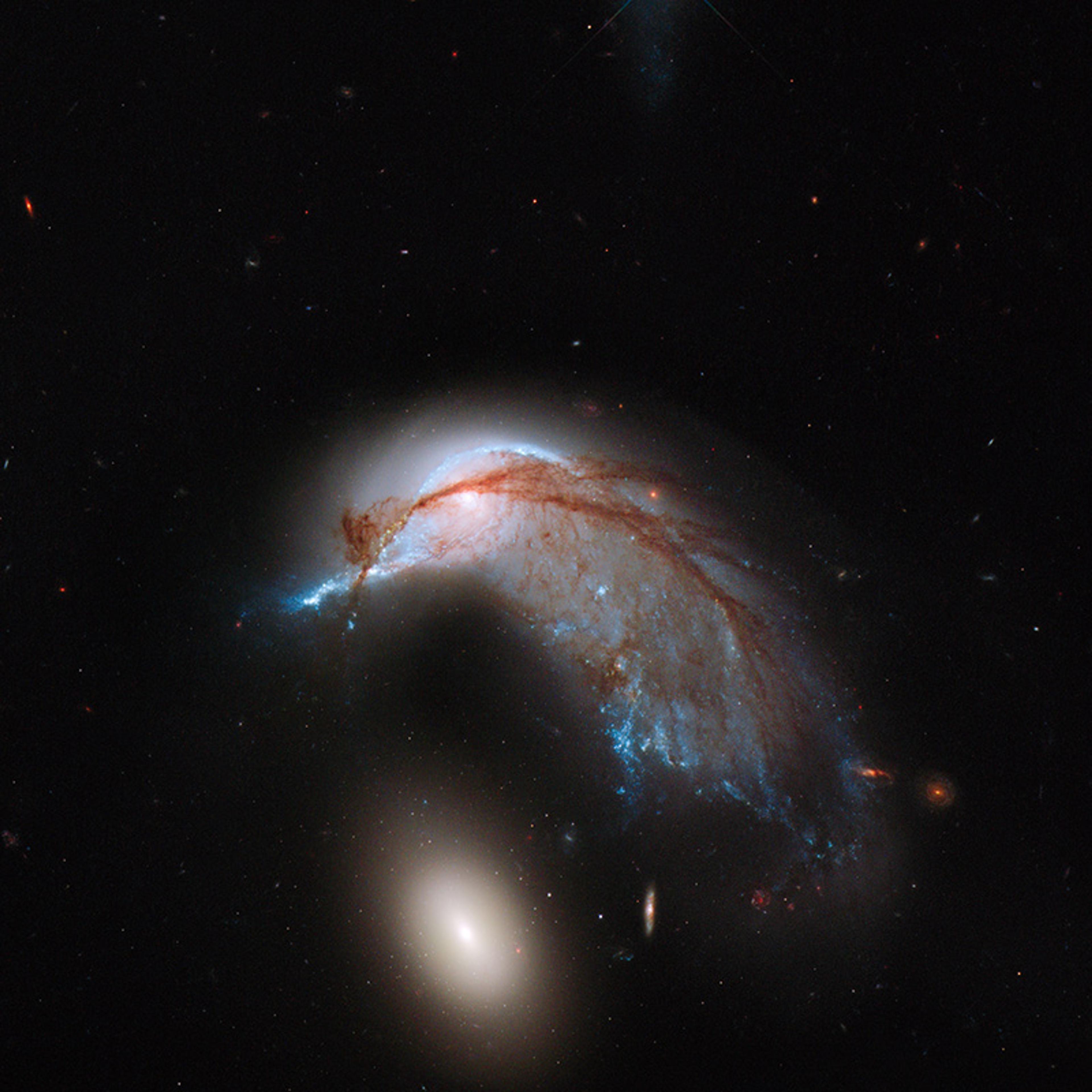
The Porpoise Galaxy (NGC 2936). Photo courtesy NASA/ESA/STScI/AURA
But just as Lilly’s prophesies of ‘bilateral conversation’ didn’t pan out, neither have any subsequent attempts at SETI (the search for extraterrestrial intelligence) returned any evidence of a populous Milky Way – instead, only silence. We didn’t civilise the dolphin, nor did we tune in to a civilised galaxy. Lilly’s research nonetheless helped facilitate a sea change in the way that we view our position in the cosmos, by bringing into further focus the severity of that worst silence of all: humanity’s potential extinction.
Previous generations had presumed that intelligence identical to our own was so unquestionably beneficial and adaptive that it was the triumphant and inevitable result of natural history. This was thought to apply here and elsewhere, on our planet and beyond, with humanoids and language often presumed to be cosmically omniprevalent.
In a treatise published posthumously in 1698, for example, the Dutch polymath Christiaan Huygens announced that the other planets harbour humanoid beings. They might look different – possibly even being crustaceans – but, aside from superficial cosmetic differences, they will be bipeds with hands, feet and binocular eyes. They will mirror us cognitively too: they will also study science, invent technology and enjoy ‘musick’.
Later, as evidence of evolutionary history came to light, it appeared to naturalists as if there was an upwards elevator tending – inexorably – towards something anthropoid. In 1813, the French economist Henri de Saint-Simon argued that ‘if man is the only animal that attained perfection, it is simply because man prevented the intelligence of other animals from also developing as it could have.’ We occupy the intelligence niche – as apex cogitators of our planet – but if we vacate this position something else will eventually stand steadfastly upright. Indeed, palaeontologists soon noticed that the relative brain sizes of animals seem steadily to balloon throughout the fossil record. This was interpreted as a palaeontological prelude prophesying the inevitable arrival of our own oversized craniums.
In an 1855 book, one writer claimed that this inevitable evolutionary upsurge – toward something recognisably human – applies as much ‘to vertebrates on Jupiter or Neptune’. It repeats throughout the entire Universe. A few years later, the Danish physicist and chemist Hans Christian Ørsted announced that we can expect our ‘Laws of Beauty’ and ‘Principles of Morality’, likewise, to be cosmically universal. Given this confidence in the cosmic inevitability of humanity, there was muted fear concerning our extinction. As the 1900s opened, the British novelist and journalist H G Wells boldly announced that ‘Worlds may freeze and suns may perish, but there stirs something within us now that can never die again.’ This ‘stirring’ was technological civilisation.
All we need do is tune our radio antennae in the right way to reveal a ‘cloud of thinking stars’
Then, in 1914, mechanised conflict engulfed the planet. The First World War provoked some to predict that, with its expanding technological power, humanity might wipe itself out. Winston Churchill was one such voice: in 1924, he wrote that ‘for the first time’ our species seemingly owns ‘the tools’ to ‘accomplish its own extermination’. Just a year prior, the Italian novelist Italo Svevo similarly warned that the trajectory of technology might prove fatal: he imagined that, one day, some guileless scientist will invent an ‘incomparable explosive’ that will be used to shatter the Earth, making it ‘once again a nebula’. Over in the United States, the scientist Louis Berman remarked that ‘speculations’ on natural risks – such as comets or ‘the Sun growing cold’ – become ‘babyish fancies’ compared with civilisation’s development of firepower.
Such forecasts, nonetheless, remained few and far between. What’s more, many remained very confident that, even if Homo sapiens silences itself, civilisation will once again blossom upon Earth. In 1928, the Canadian-American palaeontologist William Diller Matthew cheerfully remarked that human extinction would merely ‘set back’ the ‘evolutionary clock’ a few million years. He suggested that ‘in far distant ages to come the future destiny of the world might be committed into the hands of some super-intelligent dog or bear or glorified weasel.’ If the mammals get extinguished along with us, then perhaps ‘the lizards might rebuild the Age of Reptiles’ and the world be ruled by intelligent saurians.
Again, this evolutionary inevitability of technological and discursive intelligence was presumed to extend far beyond the Earth. One of Matthew’s colleagues, the French palaeontologist and Jesuit priest Pierre Teilhard de Chardin, announced that, just as our planet would be identifiable to observant aliens due to the ‘phosphorescence of thought’, all we need do is tune our radio antennae in the right way to reveal the Milky Way to be a ‘cloud of thinking stars’.
Nonetheless, in 1932, the British-Indian biologist J B S Haldane sagely remarked that there is no guarantee that advanced civilisation would necessarily re-emerge if it accidentally destroyed itself. It’s therefore lucky, he remarked, that it seems ‘wildly unlikely’ we will ever unlock the power of the atom. One year later, the Hungarian-born American physicist Leo Szilard conceived of the nuclear chain reaction. The power of the atom was soon unleashed upon an unsuspecting world.
By 1955, the Hungarian-born British writer Arthur Koestler noted that, ever since the first hydrogen bomb tests, there had been ‘sudden interest in life on other stars’. Attributing this craze to the fact that we feel we might be ‘doomed to extinction’ down here, he commented that we can only have faith that alien civilisations, elsewhere, might be wiser.
There was one problem. Where are they all? As the 1960s opened, the Order of the Dolphin was dismayed as it became clearer that the Milky Way was no cacophonous cloud of thinking stars. Despite this, the newspapers gleefully reported on Project Ozma and, particularly, Lilly’s involvement with the search for extraterrestrials. It was relayed that Lilly had revealed a resident alien intellect: the only reason we’ve thus far overlooked their braininess is because dolphins are ‘not technically inclined like humans’. One journalist, inheriting Lilly’s own inclination for fanciful exaggeration, wrote that cetaceans could ‘possess a far greater intelligence than [humans]’, but, because they lack hands, these oceanic superintelligences would never be able to build telescopes or ‘initiate communications’. This was taken as potentially instructive concerning the lack of signals from aliens.
It was said that here, on our own planet, seemingly advanced intelligences have evolved without any impulse to stand upright, to scour the skies, or to pollute the planet with fallout. Suddenly, ‘technically inclined’ minds like our own seemed less cosmically inevitable: more contingent, more fragile. In Lilly’s own words: ‘May there not be other paths for large brains to take?’
Talking to the press, Drake argued that technological civilisation is surely highly adaptive, such that it ‘seems reasonable to believe [it will develop] on most life-bearing planets’. He did note, however, that ‘not all experts on evolution accept this’ – and pointed to the bottlenose dolphin as evidence that intelligence needn’t be technological.
Driven by promises of pâté, the dolphins immediately start winning Nobel prizes
In 1960, The Baltimore Sun published a satirical piece, envisioning Project Ozma establishing contact with the denizens of Tau Ceti. When it’s broadcast to the Tau Cetians that Earthlings are ‘featherless bipeds’, all humanity hears in response is ‘cosmic laughter’. The aliens explain that their own planet once housed technological apes – until they wiped themselves out with their own inventions, that is. Then comes the punchline. The Tau Cetians are revealed to be ‘porpoises’: the ‘perfect, ultimate form toward which Nature is working everywhere that there’s a trace of life, all over the Universe’.
A year later, Szilard, the architect of the atomic age, had a short story collection published entitled The Voice of the Dolphins (1961). The titular tale chronicles an alternative course for the Cold War. Directly referencing Lilly, it imagines the founding of a research institute that proves that cetaceans far surpass humanity in brainpower. They just lack motivation to employ their vast intellects, because they are totally content with their ‘submerged mode of life’. So, the scientists discover ways to motivate them to ‘perform intellectually strenuous tasks’ – harnessing their otherwise squandered genius. This is achieved by luring them with terrine. Driven by promises of pâté, the dolphins immediately start winning Nobel prizes. Having quickly exhausted the problems of science, they go on to solve the thorny problem of world peace, thereby averting impending thermonuclear self-annihilation for humankind.
Another story in Szilard’s book imagines the attention of extraterrestrials being drawn to Earth by way of ‘mysterious flashes’ standing out against the depths of space in their telescope surveys. This isn’t the sonorous ‘phosphorescence of thought’, but rather the sickly silent afterglow of nuclear war, betrayed by spectrographic signatures of uranium explosion.
In December 1961, Science published a groundbreaking paper by Lilly and Alice Miller on dolphin communication. The same issue also hosted an essay by the German astrophysicist Sebastian von Hoerner, suggesting various causes for the galaxy’s silence. In a Cold War context, self-destruction instantly offered itself as a culprit. The idea caught on: perhaps alien civilisations developed H-bombs and then annihilated themselves? Hence, the chilling stillness of space.
‘Today, as never before, the sky is menacing,’ wrote the American anthropologist and naturalist Loren Eiseley. ‘Things seen indifferently last century by the wandering lamp-lighter now trouble a generation that has grown up to the wail of air-raid sirens.’ Without the evidence of more advanced extraterrestrial civilisations to comfort us that the passage ahead for humanity is navigable, Eiseley looked to our ‘brother mammals’ for a sense of humanity’s destiny. Yet their inscrutability provided little comfort. Instead, they proved to be a blank canvas upon which to project. Eiseley wistfully romanticised dolphins as a prelapsarian alternative to human fallenness, describing them as a
disembodied intelligence floating in the wavering green fairyland of the sea – an intelligence possibly near or comparable to our own but without hands to build … or poison with strontium the planetary winds.
Perhaps the other planets are populated with philosophical porpoises, never to be tempted by the perils and promises of industrialisation? ‘There is nothing more alone in the Universe than man,’ Eiseley concluded.
Where previously minds like ours had seemed so blatantly beneficial and adaptive as to be everywhere inevitable, the dolphin became a symbolic conduit for the realisation that technological civilisations might well be cosmic flukes. The step to technology might not be so inevitable after all. Neither outer space nor our kindred mammals had answered our pleas for signs of minds like ours, and with this came a new sense of precarity – and preciousness – for the human project.
Ageing civilisations either self-destruct or shift focus to something like Zen Buddhism
In 1960, the American anthropologist William W Howells asked the question directly: ‘Supposing, in a moment of idiot progress, we really killed ourselves off. Would Homo rise again?’ Glancing through the tree of life, he reasoned that the other intelligent mammals are doing perfectly well at survival without developing agriculture or computers. ‘So all in all our hopes for repetition are not good, and we had better stay the hand that drops the bomb.’ The porpoises will not rise to take our place.
Searching for answers to cosmic silence provoked experts to start seriously thinking about the various technological inventions that could cut short the lifespan of a civilisation. Inventions that might lie in wait in our own future. By the mid-1960s, the Russian astrophysicist Iosif Shklovsky and the Polish writer Stanisław Lem had suggested a litany of other potential civilisation-killers besides the bomb, from the ‘creation of artificial intelligence’ to the ‘over-production of information’.
But another option had been floated. Perhaps it isn’t technoscientific organisms that are inevitably impermanent, but only their technoscientific ‘state of mind’. Von Hoerner suggested that the civilisations that don’t self-destruct will be those that have undergone a ‘loss of interest in science and technology’. Only this, he implied, would create a stable – and sustainable – relation with the environment in the long term.
Later, at the first Soviet-American conference on communication with extraterrestrial intelligence (CETI) in 1971, it was suggested by some attendees that we don’t see evidence of supercivilisations across the galaxy because the only ones that persist are the ones that give up the risky path of technology and instead pursue immersion in nature. Ageing civilisations either self-destruct or shift focus to something like Zen Buddhism, it was conjectured: pursuing spiritual and qualitative self-perfection at the cost of all interest in external reality or ‘“quantitative” expansion’. The Russian astrophysicist Vladimir M Lipunov speculated that, across the Universe, the scientific mindset recurrently evolves, discovers all there is to know and, having exhausted its compelling curiosity, proceeds to wither away. By 1978, the philosophers Arkadiy Ursul and Yuri Shkolenko wrote of such conjectures – concerning the ‘possible rejection in the future of the “technological way” of development’ – and reflected that this would be tantamount to humanity’s ‘transformation into something like dolphins’.
Eiseley once pondered: ‘If man had sacrificed his hands for flukes … he would still be a philosopher, but there would have been taken from him the devastating power to wreak his thought upon the body of the world’.
For better or worse, this isn’t true. As the American space scientist David Brin announced in 1986, dolphins are smart, but the 1960s-era reports of them being untapped geniuses are ‘folktales’. Ironically, aside from being a NASA consultant, Brin is also known for writing sci-fi epics involving enlightened dolphins. But that’s just fiction, Brin stresses: the ‘problem-solving skills of even the brightest porpoise cannot match those of a human toddler’.
The dolphin – that perfect floating signifier – has become a peaceful ‘other’, which we ventriloquise to voice our sense of our own mechanised fallenness. (Ironic that they were once ‘warlike and voracious’.) But ‘technological’ is not an optional qualifier of ‘humanity’. Plausibly since Homo erectus, our very physiology has been moulded by our inventions. Moreover, it was technology that made humans philosophical. By distancing our ancestors from pressing needs and interests – with crop surpluses and city safeholds – the burgeoning of technological civilisation is what first facilitated disinterested curiosity and enquiry. Without technology, we would be worrying too much about our next meal to be ethicists. We certainly wouldn’t be able to ponder the silence of the cosmos.
And why the sense of humanity’s unique fallenness? Other animals have drastically altered, even poisoned, the planet. More than 2 billion years ago, photosynthesising cyanobacteria likely triggered Earth’s first mass extinction by polluting the atmosphere with the oxygen that we now breathe. The difference between us and the cyanobacteria is that we understand our environmental impacts, and are beginning to hold ourselves accountable for them. This is necessarily double-edged. By becoming aware of the consequences of our actions, we become capable of recognising both bad and good in them – with equitably immense orders of potential magnitude. Without being free to fall, we wouldn’t be sufficient to stand: our capacity for truly consequential altruism and our ability to poison with strontium the planetary winds have the same root. Whether we like it or not, we are caretakers.
Today, thanks to advances in thoroughly human technology, scientists have made progress in grasping dolphin communication on its own terms. We know that bottlenoses have signature whistles to address each other. Marine biologists such as Denise Herzing are employing machine-learning techniques to search datasets of dolphin vocalisations, hoping to determine whether more complex linguistic structure is to be found there. But the idea that cetaceans are somehow untapped super-philosophers is no longer entertained. Dolphins lack a true language, the animal communications expert Arik Kershenbaum argues, while asserting that, if humankind disappears, it’s unlikely that dolphinkind (or any other animals) would take up our linguistic mantle. Others, such as the biologist and philosopher Russell Powell and the astrobiologist Kevin Hand, stress that life in an aquatic medium puts major obstructions on the ability to develop tools and technology. This applies here and abroad, to Earth’s oceans as much as Europa’s.
If we truly are alone, the positive impact of our actions could be truly astronomical in scope
For Lilly’s part, he went on to discredit himself with increasingly outlandish claims. Inventor of the isolation tank, he slipped into psychedelic self-experimentation. His later writings are filled with strange millenarian visions of interstellar conspiracy. He believed that malign extraterrestrial superintelligences were influencing Earth, coaxing humanity to manufacture its own obsolescence through ceding agency to computers. For Lilly, our only chance of salvation against machinic apocalypse was figuring out how to understand the dolphins, who had been communicating with friendly UFOs all along. Once we learn dolphinese, the cetaceans would teach us the aliens’ ancient lore: the sole path to save us from extinction.
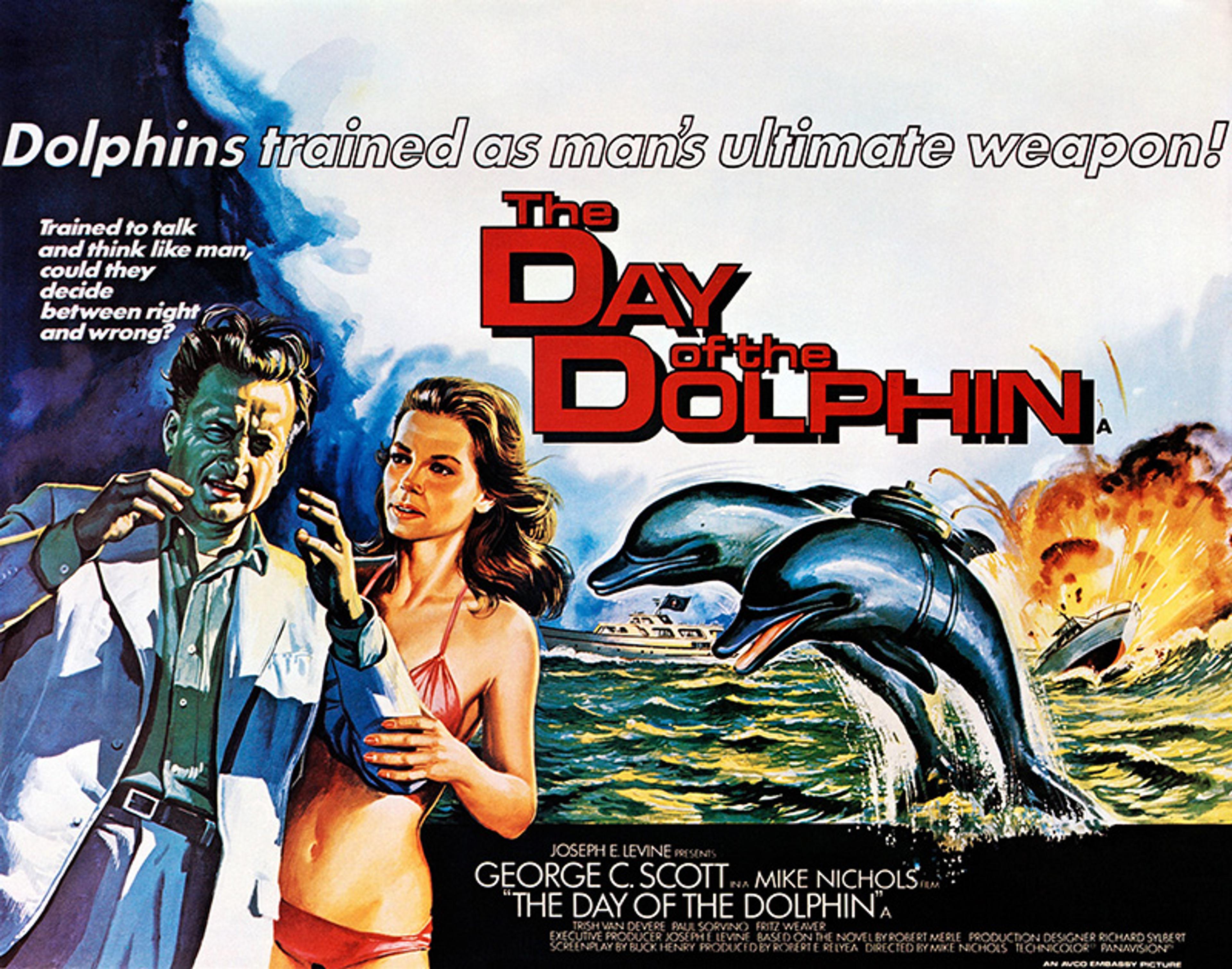
Hollywood was interested in Lilly’s ideas. Photo by Embassy Pictures/Getty
This yearning for us to somehow receive the completed library of galactic wisdom is simply a backsliding desire to return to the securities of inviolable theistic authority. Drake made the religious undertones explicit when he wrote an essay, ‘On Hands and Knees in Search of Elysium’ (1976), speculating that we will receive an instruction manual for immortality from ET. Such sentiments oppose the fundamental injunction that we must dare to use our own understanding, sapere aude, and undertake all the risks that come with this. We hope that wiser beings are out there, but if we want a better world, we will need to build it ourselves – out of our own past and future errors – rather than wait for readymade answers from elsewhere.
An honorary member of the Order of the Dolphin, Shklovsky remained adamant that giving up on technoscience would be a fate worse than extinction. He noted that, if the other inhabited planets are populated by placid post-technological porpoise-beings, then we’re as good as alone: in the sense of being the only beings driven to alter the world for the better.
Back in the 1960s, Shklovsky had been hopeful that we live in a populous galaxy. But, by 1980, he was convinced that we might just be the only technological civilisation. This, Shklovsky reasoned, means that we won’t be getting instruction manuals or roadmaps from elsewhere. But this isn’t cause for despair. It might place a titanic duty upon us – for the ‘responsibility of humanity’ grows in lockstep with the ‘exclusivity of the tasks facing it’ – but it also means that we are positioned to make an equally titanic difference. We might be, Shklovsky suggested, the ‘vanguard of matter’. In other words, the single fragile seed that could spread its roots throughout the entire galaxy, and potentially beyond, awakening the currently sterile and silent firmament to the richness of life, consciousness, and even conversation. If we truly are alone, in an otherwise mute cosmos, the positive impact of our actions could be truly astronomical in scope.
This is a heavy burden. We might or might not live up to it, literally. But pining for the path of the porpoise is only our – human, all too human – way of shirking the responsibility. This is why we can’t surrender putting questions to nature, no matter how uncommunicative and unconversant it might be revealed to be. For, in the words of the American philosopher Wilfrid Sellars, it doesn’t matter whether we imagine it happening to a ‘Martian’, a ‘featherless biped’ or even a ‘dolphin’, but once any being has bitten the apple of knowledge – and awoken to the demand to find a foothold for values in a Universe of mute facts – there’s no turning back. The only resolution is ‘eating the apple to the core’.
